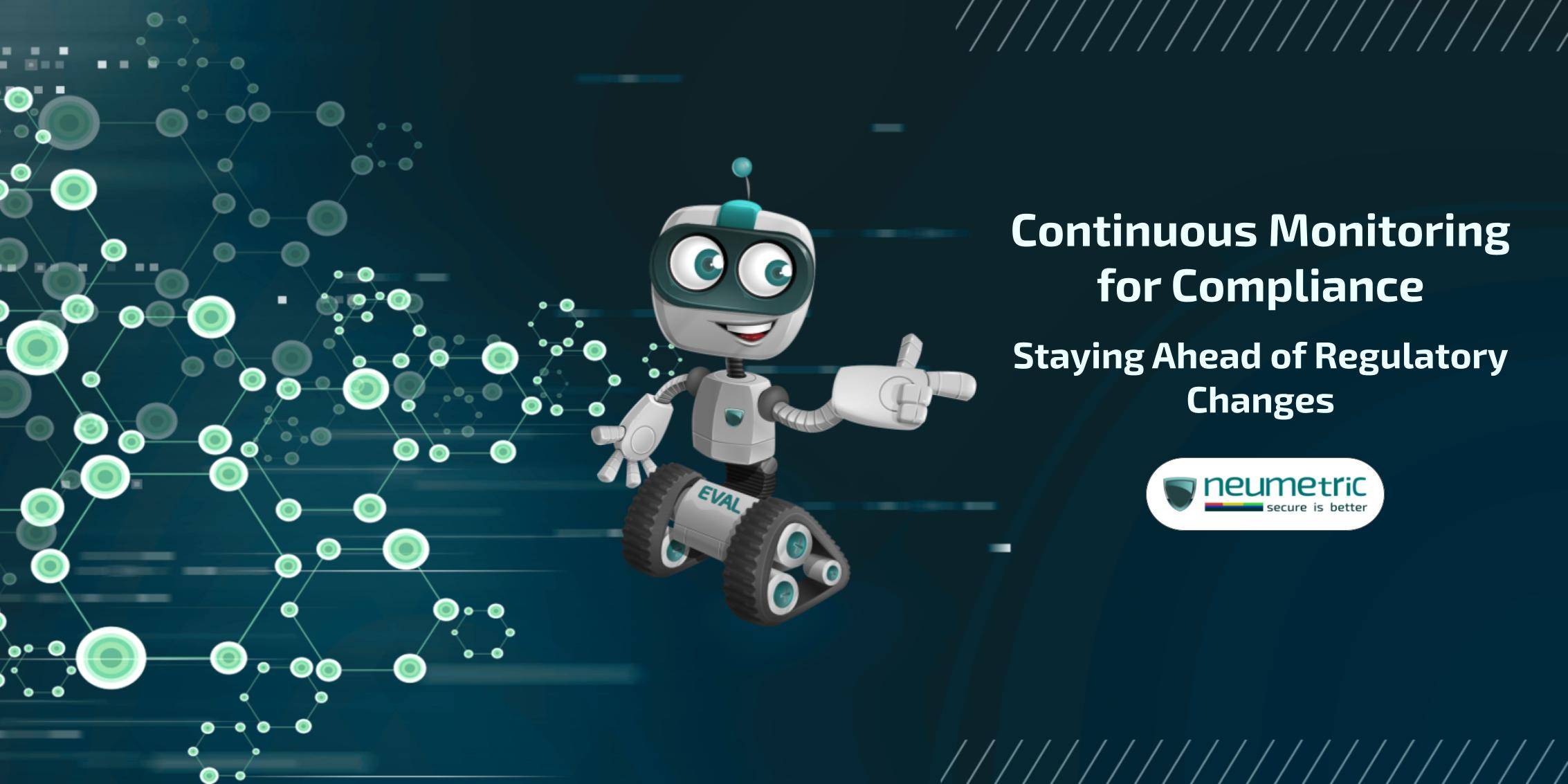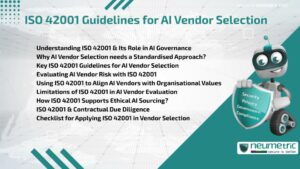Table of Contents
ToggleContinuous Monitoring for Compliance: Staying Ahead of Regulatory Changes
Introduction
In today’s dynamic regulatory environment, organizations face an ongoing challenge: keeping pace with the relentless evolution of compliance requirements. The regulatory landscape is characterized by frequent updates, amendments & new mandates, creating a complex web of obligations for businesses across industries. Amidst this complexity, the consequences of non-compliance loom large, encompassing financial penalties, reputational damage & even legal ramifications. To navigate these treacherous waters effectively, organizations must adopt a proactive approach to compliance management.
At the heart of this proactive strategy lies the concept of continuous compliance monitoring. Unlike traditional compliance approaches that rely on periodic assessments, continuous monitoring offers real-time insights into regulatory changes & their implications. By leveraging technology-driven solutions & robust monitoring frameworks, companies can maintain a vigilant eye on their compliance posture, identifying & addressing potential risks before they escalate into full-blown violations. This proactive stance not only minimizes the likelihood of non-compliance but also fosters a culture of compliance awareness & responsiveness throughout the organization.
Moreover, continuous monitoring for compliance goes beyond mere risk mitigation; it serves as a strategic imperative for businesses seeking to thrive in a regulated environment. By staying ahead of regulatory changes, organizations can position themselves as industry leaders, demonstrating a commitment to best practices & regulatory alignment. Additionally, proactive compliance efforts can uncover opportunities for operational optimization & efficiency gains, driving long-term competitiveness & sustainability. In essence, continuous compliance monitoring represents a proactive paradigm shift, empowering organizations to navigate regulatory complexities with confidence & agility.
The Compliance Landscape is Always Shifting
In the intricate world of compliance, change is the only constant. Whether it’s at the local, national or international level, new regulations are introduced with remarkable regularity. Governments & regulatory bodies, striving to adapt to evolving societal needs & technological advancements, constantly churn out new mandates. Moreover, existing rules are subject to frequent updates & amendments, making it challenging for organizations to keep pace.
- New regulations introduced regularly at local, national, international levels: Governments worldwide are continuously enacting new laws & regulations to address emerging challenges & fill gaps in existing frameworks. From data protection laws to financial regulations, the scope & complexity of compliance requirements are expanding rapidly.
- Existing rules frequently updated & amended: Regulatory bodies often revise existing regulations to reflect changing market dynamics, technological advancements & lessons learned from past incidents. These updates aim to enhance efficacy, address loopholes & ensure alignment with evolving industry standards.
- Hard for organizations to manually track all changes: With the sheer volume & frequency of regulatory changes, manually tracking them becomes a Herculean task for organizations. Relying solely on human resources to monitor & interpret regulatory updates is not only labor-intensive but also prone to errors & oversights.
- Risk of missed deadlines, fines, damage to reputation: Failing to adapt to regulatory changes in a timely manner can have severe consequences. Organizations risk missing compliance deadlines, facing hefty fines & suffering reputational damage due to non-compliance. Moreover, in today’s interconnected world, regulatory violations can quickly escalate into legal battles & public relations nightmares.
Proactive Monitoring Beats Reactionary Tactics
In the realm of compliance, being proactive is akin to having a sturdy umbrella before the storm hits. Yet, many organizations, unfortunately, adopt a passive approach, akin to waiting for the raindrops to fall before seeking shelter. This reactive stance means they only update their compliance activities when prompted by external audits or investigations. Consequently, when regulatory changes occur, it triggers a frenzied scramble to catch up, akin to trying to fix a leaky boat during a storm.
- Many organizations take a passive approach: It’s all too common for organizations to adopt a “wait-and-see” attitude towards compliance. Rather than staying ahead of the curve, they prefer to react to regulatory changes only when absolutely necessary. This passive stance can leave them vulnerable to compliance gaps & regulatory scrutiny.
- Only update compliance activities in reaction to external audits/investigations: For some organizations, the catalyst for updating compliance activities is often the looming threat of an external audit or investigation. This reactionary approach means they’re constantly playing catch-up, rather than proactively anticipating & addressing compliance requirements.
- This leads to last-minute scrambles whenever changes occur: When regulatory changes occur, organizations caught in a cycle of reactionary tactics find themselves in a state of panic. The rush to implement new procedures & ensure compliance before deadlines loom can be chaotic & stressful.
- Hard to incorporate new procedures effectively on short notice: Trying to integrate new procedures & processes on short notice is like trying to fit a square peg into a round hole. Without adequate time for planning & implementation, there’s a risk of errors, oversights & ineffective compliance measures.
- Proactive monitoring provides time for thoughtful adaptation: On the contrary, proactive monitoring affords organizations the luxury of time. By continuously monitoring the regulatory landscape & anticipating changes, they can adapt their compliance activities thoughtfully & strategically. This proactive approach minimizes the likelihood of last-minute scrambles & enables smoother transitions to new compliance requirements.
Creating a Continuous Compliance Monitoring Program
Building a robust continuous compliance monitoring program is akin to constructing a sturdy foundation for a skyscraper – it requires meticulous planning, strategic execution & ongoing maintenance. Here’s how organizations can embark on this journey:
- Assign a central oversight team to be aware of emerging regulations: Designate a dedicated team or individual responsible for keeping a vigilant eye on the regulatory horizon. This central oversight ensures that emerging regulations are promptly identified & addressed.
- Tap resources like regulatory agencies, industry groups: Leverage resources provided by regulatory agencies & industry groups to stay informed about upcoming regulatory changes & best practices. Active engagement with these entities can provide valuable insights & guidance.
- Launch system to organize regulatory data as it’s gathered: Implement a comprehensive system to gather, organize & catalog regulatory data as it becomes available. This ensures easy access to relevant information when needed.
- Distill requirements into actionable insights: Translate complex regulatory requirements into clear, actionable insights that can be easily understood & implemented across the organization.
- Set reminders for reporting deadlines, grace periods: Establish automated reminders for reporting deadlines & grace periods to ensure timely submission of required documentation & compliance activities.
- Disseminate timely info to responsible parties: Establish efficient communication channels to disseminate timely regulatory updates & information to relevant stakeholders within the organization. This ensures everyone is on the same page & aware of their compliance obligations.
- Conduct impact assessments for major changes: Perform comprehensive impact assessments to evaluate the potential ramifications of major regulatory changes on the organization’s operations, processes & compliance posture.
- Adjust policies, procedures, controls accordingly: Based on the findings of impact assessments, make necessary adjustments to policies, procedures & controls to ensure alignment with new regulatory requirements. This proactive approach mitigates compliance risks & enhances organizational resilience.
The Path Forward
Embarking on the path towards effective continuous monitoring for compliance requires not just a change in strategy, but a fundamental shift in organizational culture. Here’s a roadmap to navigate this journey successfully:
- Culture shift key to successful monitoring program: Cultivate a culture of compliance within the organization, where staying abreast of regulatory changes is viewed as a collective responsibility rather than a burdensome task. Fostering a culture that values compliance promotes accountability, transparency & proactive engagement with regulatory requirements.
- Management endorsement needed to drive adoption: Secure buy-in & endorsement from senior management to drive adoption of the continuous monitoring program. Leadership support is essential in setting the tone for compliance efforts & allocating resources to support implementation.
- Automate as many tracking/monitoring functions as possible: Leverage technology to automate tracking & monitoring functions wherever feasible. Implementing automated systems not only increases efficiency but also reduces the risk of human error & ensures consistency in compliance activities.
- Expand information sharing channels organization-wide: Establish robust communication channels to facilitate the sharing of regulatory updates & compliance-related information across the organization. Open & transparent communication fosters collaboration, enhances awareness & promotes a shared understanding of compliance requirements.
- Provide training for personnel most affected by changes: Offer targeted training programs for personnel who are most affected by regulatory changes. Equipping employees with the knowledge & skills necessary to navigate evolving compliance requirements empowers them to fulfill their compliance obligations effectively.
- Plan an integration period for substantial changes: Recognize that substantial regulatory changes may require an integration period to ensure smooth transition & implementation. Plan accordingly by allocating sufficient time & resources for testing, training & adjustment to new processes & procedures.
Conclusion
In today’s ever-evolving regulatory landscape, the importance of continuous compliance monitoring cannot be overstated. By proactively staying abreast of regulatory changes, organizations can mitigate risks, avoid costly penalties & safeguard their reputation. Embracing a culture of compliance, supported by management endorsement, automated tracking systems & effective communication channels, empowers organizations to navigate the complexities of compliance with agility & confidence.
Moreover, continuous compliance monitoring not only ensures adherence to current regulations but also positions organizations to anticipate & adapt to future regulatory developments. By investing in proactive monitoring & strategic planning, organizations can transform compliance from a reactive burden into a strategic advantage. In an era where regulatory scrutiny is intensifying & the consequences of non-compliance are severe, the imperative for continuous monitoring has never been clearer. It’s time for organizations to embrace the proactive approach & seize control of their compliance destiny.
FAQ
Why is continuous monitoring for compliance important?
Continuous monitoring for compliance is crucial because it allows organizations to stay ahead of regulatory changes. By proactively tracking & adapting to evolving regulations, businesses can avoid last-minute scrambles, hefty fines & damage to their reputation. It’s like having a compass in a stormy sea, guiding us through the complex maze of compliance requirements with confidence & clarity.
How can organizations foster a culture of compliance?
Fostering a culture of compliance requires leadership endorsement, open communication & proactive engagement. When senior management champions compliance efforts & encourages transparency, it sets the tone for the entire organization. By investing in training, automation & information sharing, businesses can empower employees to embrace compliance as a shared responsibility rather than a burdensome task.
What are the benefits of automating compliance monitoring processes?
Automating compliance monitoring processes offers numerous benefits, including increased efficiency, reduced risk of human error & enhanced compliance accuracy. By leveraging technology to track & monitor regulatory changes, organizations can streamline compliance activities, ensure consistency & free up resources for more strategic initiatives. It’s like having a trusty assistant who never misses a beat, keeping us on track & ahead of the compliance curve.





